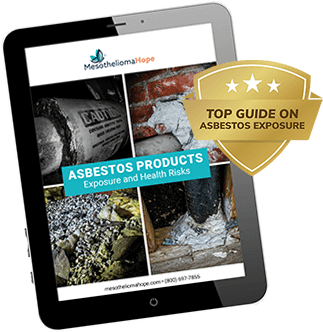Drywall and Asbestos
Drywall is the first-choice material for interior wall finishing in most American buildings. That includes residential, commercial and industrial applications.
Also called gypsum wallboard or sheetrock, American builders have used drywall products for over seven decades. It’s fast to install, finishes smoothly and is economical to work with.
Today’s drywall sheets, tape, and joint compounds are also safe to work with. That wasn’t the case with earlier drywall products.
Until the early 1970s, practically all drywall building components contained asbestos. Originally, manufacturers added asbestos fibers into drywall materials to make them lighter, stronger and more fire-resistant.
That turned into a national disaster that compounded the entire asbestos exposure problem.
Working with asbestos-containing drywall products exposed thousands of American construction workers to deadly airborne asbestos fibers. Sadly, many of those workers developed asbestos-caused diseases like mesothelioma.
History of Drywall and Asbestos
For centuries, lath and plaster was the common method for finishing the interior walls of wood-frame buildings. Laths were small, thin boards that carpenters nailed across wood studs.
This gave a solid base for plasterers to smear on a wet plaster mix and let it dry. But lath and plaster was a time-consuming process.
In 1916, the United States Gypsum Company invented a better way for finishing interior walls. Plaster already contained gypsum as a base material, but the US Gypsum Company came up with an idea to replace lath boards with gypsum-based panels.
Drywall sheets soon conformed to 4 feet by 8 feet standard panel sizes similar to plywood. This let installers nail or “hang” the drywall panels, or boards as they’re commonly called, much faster than lath.
“Boarding” became the first drywall installation step. Next followed what’s now called “taping”.
Taping involved soaking rolls of paper tape in a wet gypsum solution and covering the drywall board seams. Then, the drywall tapers mixed a thicker gypsum solution with water to trowel over the tape seams and other imperfections. This thick solution is referred to as joint compound.
Because the drywall process was so easy, fast and economical, it soon replaced lath and plaster.
By World War II, virtually all new buildings used the drywall or sheetrock interior finishing method. Following the war, a building boom took off. The demand for drywall was massive.
Asbestos Use in Drywall Products
World War II brought a demand for many building projects used to drive the war effort. That included constructing ships, planes, and support buildings.
Following the war, construction turned toward land-based structures like residential housing, commercial businesses, and industrial factories.
Nearly every building project in the war and post-war period used asbestos. At the time, asbestos seemed the perfect building material additive. It was plentiful, cheap and widely available. Asbestos fibers added strength, lightened materials, allowed flexibility and gave them tremendous fire-resistant properties.
Eventually, asbestos-filled drywall adopted the trade name “Transite” after a particular asbestos fiber that was especially suitable for drywall sheets, tapes, and joint compounds.
Every day, American drywallers, and other construction workers, around them inhaled asbestos fibers as they cut, nailed, taped and sanded asbestos-filled drywall.
Health Risks from Drywall Asbestos Exposure
The drywall process creates a massive amount of dust. Both the boarding stage and the taping procedure send huge clouds of drywall dust into a building’s atmosphere. Even with a respirator or dust mask, it’s impossible to avoid drywall dust exposure when around a building that’s in the drywall stage.
Until the late 1970s, almost all American drywall sheets, tapes, and joint compound mixes had asbestos additives.
When asbestos-laden drywall is dried and sealed with paint, it’s virtually harmless because it doesn’t emit loose airborne fibers. It was at the install stage that construction workers experienced severe airborne asbestos fiber exposure.
Long-term and high-volume asbestos fiber exposure significantly increases the odds of a worker developing an asbestos-related disease like mesothelioma.
Tiny and sharp airborne asbestos fibers can become embedded in the lung lining. Microscopic asbestos fibers can’t be expelled and, over time, they can create mesothelioma tumors.
Compensation for Mesothelioma Caused by Drywall Products
It can take from 10 to 50 years from exposure time for mesothelioma to develop. Although there are medical advances in today’s mesothelioma treatment, usually when malignant mesothelioma is diagnosed it’s too late for full recovery. The medical bills can be extensive and personal suffering enormous.
Fortunately, mesothelioma patients who experienced asbestos drywall exposure can turn to legal help for mesothelioma compensation. If awarded compensation, it can help cover things like lost income, medical expenses, and other damages.
For more information, contact our Justice Support Team today.



